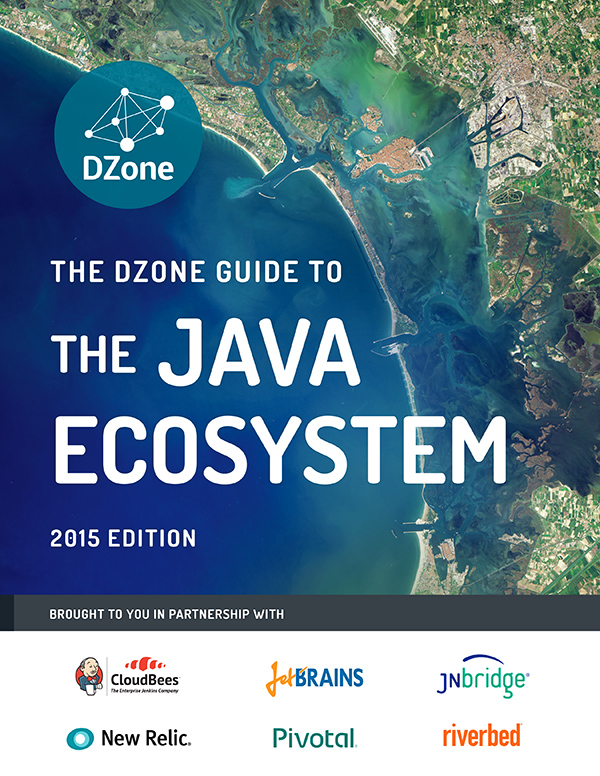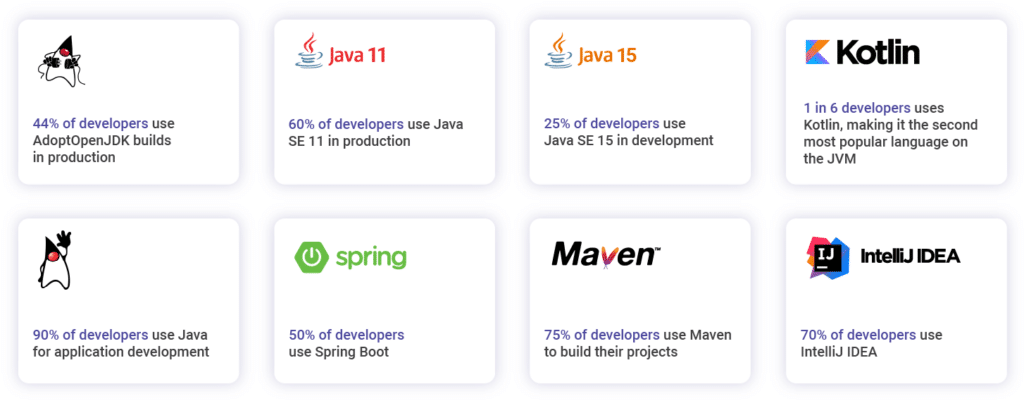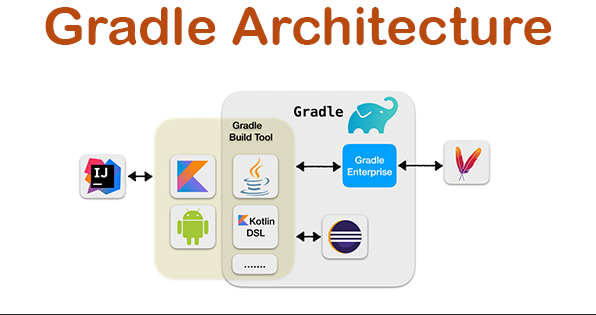The Unsung Hero: Why Gradle Updates are Crucial for Java Developers
In the ever-accelerating world of software development, the Java ecosystem continues to be a hotbed of innovation. From major OpenJDK releases like Java 21 to groundbreaking advancements in frameworks like Spring and Quarkus, there’s always something new on the horizon. While language features and framework updates often steal the spotlight, the build tools that underpin our development workflows are evolving just as rapidly. This is where the latest Gradle news becomes critically important. A modern, efficient build tool is the silent engine that powers developer productivity, ensures reproducible builds, and enables seamless integration with the latest libraries and JVM features.
Staying current with your build automation tool is no longer a matter of “if it ain’t broke, don’t fix it.” Recent Gradle releases have introduced transformative features focused on build performance, dependency management sanity, and a superior developer experience. Ignoring these updates means leaving significant performance gains and powerful new capabilities on the table. This article dives deep into the most impactful recent changes in Gradle, exploring how they can supercharge your projects, from simple microservices built with Spring Boot to complex, multi-module Jakarta EE applications. We’ll cover core concepts with practical code, explore advanced techniques for modern Java development, and outline best practices to ensure your builds are fast, reliable, and secure.
Section 1: The Need for Speed: Mastering Gradle’s Configuration Cache
One of the most significant pieces of Java performance news in the build tool space is the stabilization and widespread adoption of Gradle’s Configuration Cache. In any non-trivial project, Gradle spends time in a “configuration phase” before it even begins executing tasks. During this phase, it evaluates all build scripts, resolves plugin dependencies, and constructs a task graph. For large, multi-module projects, this phase can become a noticeable bottleneck, slowing down every single build command you run, even simple ones like ./gradlew tasks.
The Configuration Cache brilliantly solves this problem by treating the configuration phase as a pure function. It takes your build scripts and environment as input and produces the task graph as output. The first time you run a build with the cache enabled, Gradle serializes and stores this output. On subsequent runs, if none of the inputs (like build.gradle.kts or settings.gradle.kts) have changed, Gradle skips the entire configuration phase and reuses the cached task graph. This can shave seconds, or even tens of seconds, off every build, leading to a dramatic boost in developer productivity and faster CI/CD pipelines.
Enabling the Configuration Cache
Activating this feature is straightforward. You simply need to add a line to your gradle.properties file. This single change can have a profound impact on your daily workflow.
# gradle.properties
# Enable the configuration cache for faster builds
org.gradle.configuration-cache=true
# For CI environments, you might want to treat warnings as errors
# org.gradle.configuration-cache.problems=warnWhen you run a build for the first time, you’ll see a message indicating the cache has been stored:
Calculating task graph...
Configuration cache entry stored.

On the next run, you’ll see the magic happen:
Reusing configuration cache.
Calculating task graph...
The “Reusing” message is your confirmation that the time-consuming configuration phase was skipped entirely. This feature is a game-changer and a foundational element of modern, high-performance Gradle builds, directly impacting anyone following JVM news and performance optimizations.
Section 2: Taming Dependencies with Version Catalogs
As projects grow, managing dependencies can become a chaotic mess. Hardcoding group names, artifact names, and versions as magic strings across multiple build.gradle.kts files is a recipe for disaster. It leads to inconsistencies, painful upgrades, and a high risk of errors. This is a common pain point discussed in both Maven news and Gradle circles. Gradle’s answer is Version Catalogs, a powerful and elegant solution for centralizing and standardizing dependency management.
A Version Catalog is a centralized file, typically gradle/libs.versions.toml, where you define aliases for your dependencies, bundles of dependencies, and plugins. Gradle then auto-generates type-safe accessors, allowing you to reference these dependencies in your build scripts with full IDE auto-completion. This approach brings sanity and scalability to dependency management.
Implementing a Version Catalog
Let’s create a catalog for a typical Spring Boot application that uses JUnit 5, Mockito for testing, and Hibernate for persistence.
First, create the gradle/libs.versions.toml file:
# gradle/libs.versions.toml
[versions]
springBoot = "3.2.3"
springModulith = "1.1.2"
junitJupiter = "5.10.2"
mockito = "5.11.0"
[libraries]
# Spring Boot
spring-boot-starter-web = { group = "org.springframework.boot", name = "spring-boot-starter-web", version.ref = "springBoot" }
spring-boot-starter-data-jpa = { group = "org.springframework.boot", name = "spring-boot-starter-data-jpa", version.ref = "springBoot" }
spring-boot-starter-test = { group = "org.springframework.boot", name = "spring-boot-starter-test", version.ref = "springBoot" }
# Testing
junit-jupiter = { group = "org.junit.jupiter", name = "junit-jupiter", version.ref = "junitJupiter" }
mockito-core = { group = "org.mockito", name = "mockito-core", version.ref = "mockito" }
[bundles]
# A bundle for common testing libraries
testing = ["junit-jupiter", "mockito-core", "spring-boot-starter-test"]
[plugins]
spring-boot = { id = "org.springframework.boot", version.ref = "springBoot" }
spring-dependency-management = { id = "io.spring.dependency-management", version = "1.1.4" }Now, your build.gradle.kts file becomes incredibly clean, readable, and type-safe. Notice the lack of hardcoded strings and versions.
// build.gradle.kts
plugins {
alias(libs.plugins.spring.boot)
alias(libs.plugins.spring.dependency.management)
kotlin("jvm") version "1.9.22"
kotlin("plugin.spring") version "1.9.22"
}
// ... other configurations
dependencies {
implementation(libs.spring.boot.starter.web)
implementation(libs.spring.boot.starter.data.jpa)
// Use the entire bundle for testing dependencies
testImplementation(libs.bundles.testing)
}
tasks.withType<Test> {
useJUnitPlatform()
}This approach is a cornerstone of modern Gradle best practices. It simplifies upgrades (just change the version in the TOML file), prevents typos, and makes the build script’s intent crystal clear. Whether you’re tracking Hibernate news for the latest JPA provider or JUnit news for new testing features, a version catalog makes managing these updates trivial.

Section 3: Advanced Techniques for the Modern Java Landscape
Gradle excels not just at the basics but also at integrating with the cutting edge of the Java ecosystem news. Its flexible architecture allows it to adapt to new JDK features, diverse JVM providers, and even emerging trends like AI in Java.
Leveraging Java Toolchains for Polyglot JDK Builds
In today’s world, it’s common for teams to need to build and test against multiple JDK versions, perhaps supporting clients on Java 17 while developing new features on Java 21. Or you may need to ensure your library works across different JVM distributions like Adoptium, Azul Zulu, or Amazon Corretto. Gradle’s Java Toolchains feature solves this by allowing you to declare which JDK version a project should be built with, independent of the JDK running Gradle itself. Gradle will even download the specified JDK for you if it’s not found locally.
// build.gradle.kts
java {
// Configure the default toolchain for this project
toolchain {
languageVersion.set(JavaLanguageVersion.of(21))
vendor.set(JvmVendorSpec.ADOPTIUM)
}
}
tasks.withType<Test> {
// You can even configure a different toolchain for specific tasks
javaLauncher.set(javaToolchains.launcherFor {
languageVersion.set(JavaLanguageVersion.of(17))
vendor.set(JvmVendorSpec.AMAZON)
})
}This provides hermetic, reproducible builds and is invaluable for maintaining compatibility across the diverse landscape of OpenJDK news and vendor-specific releases from providers like BellSoft Liberica or Oracle Java news.
Building for Project Loom and the AI Revolution
Gradle is fully equipped to handle the latest advancements discussed in Project Loom news. With the stabilization of Virtual Threads in Java 21, more libraries are adopting this new concurrency model. Gradle’s dependency management, especially with version catalogs, makes it simple to pull in the correct versions of frameworks that leverage virtual threads. The build tool itself doesn’t get in the way, allowing the JVM to handle the new concurrency model seamlessly during test execution and application runs.

Furthermore, as the Java world embraces artificial intelligence, new libraries are emerging. Keeping up with Spring AI news or the latest from LangChain4j is easy when you can add them to your version catalog. Gradle’s robust dependency resolution ensures these new, often complex, libraries and their transitive dependencies are integrated correctly into your project, allowing you to experiment with the future of Java without fighting your build tool.
Section 4: Best Practices and Optimization Strategies
To get the most out of Gradle, it’s essential to follow modern best practices that focus on performance, maintainability, and security.
- Embrace the Kotlin DSL: For new projects, prefer
build.gradle.ktsover the traditional Groovy DSL. The Kotlin DSL provides type safety, superior IDE support with auto-completion and content-assist, and a more structured, maintainable build script. - Utilize Build Scans: When a build is slow or failing, a Gradle Build Scan is your best friend. By running your build with the
--scanflag, you get a detailed, shareable web report that visualizes your task execution, identifies bottlenecks, and provides insights into your dependency resolution. - Enable Parallel Execution: For any multi-module project, you should enable parallel execution in your
gradle.propertiesfile withorg.gradle.parallel=true. This allows Gradle to execute tasks in different subprojects concurrently, significantly speeding up your builds. - Avoid Dynamic Versions: Never use dynamic dependency versions like
1.+orlatest.release. This practice leads to non-reproducible builds, where the project might build successfully today but fail tomorrow when a new, potentially breaking version is released. Version catalogs strongly encourage pinning to specific, stable versions. - Prioritize Security: Keeping up with Java security news is paramount. Integrate a vulnerability scanning plugin, such as OWASP Dependency-Check, into your build. This can be configured as a regular task to scan your project’s dependencies for known CVEs, preventing security vulnerabilities from making their way into production.
Conclusion: The Future-Ready Build Tool
The landscape of Java development is more dynamic than ever, with constant updates from Java SE news, framework enhancements, and paradigm shifts like virtual threads and AI integration. In this environment, your build tool is more than just a utility; it’s a strategic asset. The latest Gradle updates demonstrate a clear commitment to addressing the core challenges faced by modern developers: performance, complexity, and integration.
By embracing features like the Configuration Cache and Version Catalogs, you can create a development workflow that is not only faster but also more robust and maintainable. By leveraging advanced capabilities like Java Toolchains, you prepare your projects for the diverse and evolving JVM ecosystem. As you follow the exciting developments in the Java world, from Java 21 news to the first whispers of Project Valhalla, remember that a powerful, modern build tool like Gradle is what enables you to adopt these innovations with confidence and speed. The next step is clear: audit your own projects, enable these features, and experience the benefits firsthand.

